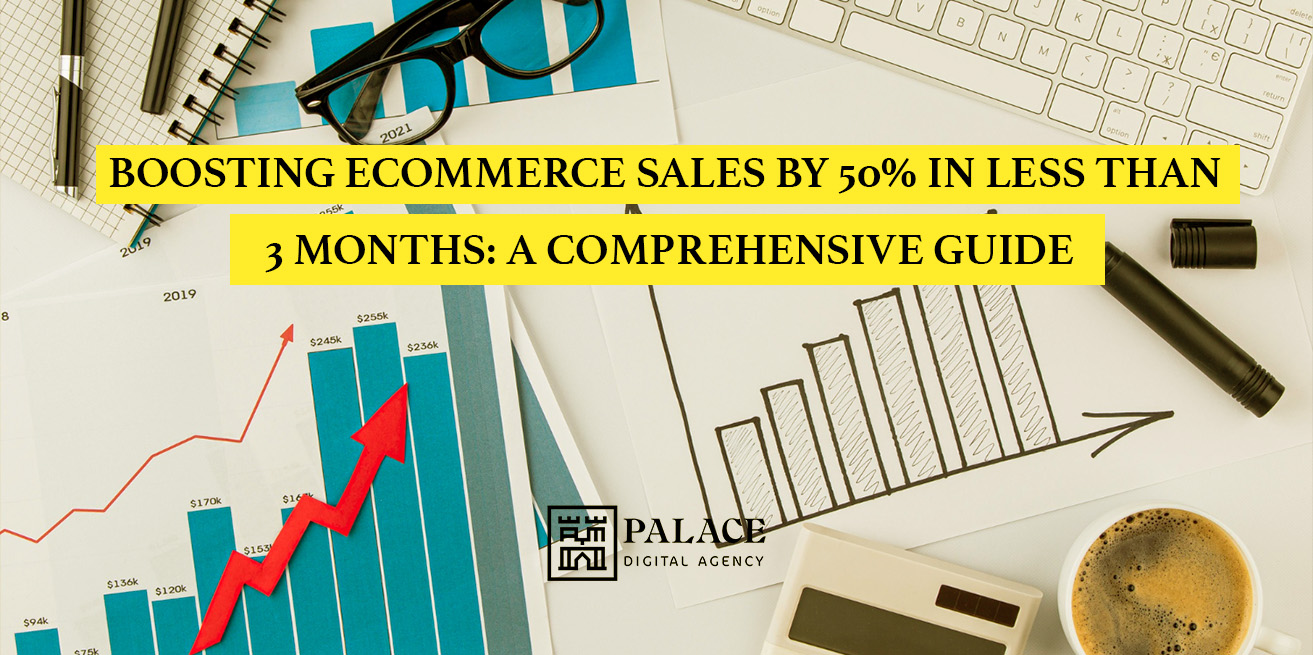Boosting ecommerce Sales within a mere three months is an ambitious goal that demands strategic planning, meticulous execution, and continuous optimization. Here’s a detailed guide to help you reach this objective:
Table of Contents
Boosting ecommerce Sales = Optimize Your Website for Maximum Conversion
User-Friendly Design:
Mobile-Responsive Layout: Ensure your website is optimized for mobile devices, as a significant portion of online shopping is done on smartphones for Boosting ecommerce Sales.
Fast Loading Speeds: Compress images, leverage browser caching, and minimize code to improve your site’s loading speed.
Enhanced Product Descriptions and Images:
High-Quality Images: Use multiple high-resolution images for each product to give customers a clear view of what they are buying.
Detailed Descriptions: Write compelling product descriptions that highlight key features, benefits, and use cases can work for Boosting ecommerce Sales.
Streamlined Checkout Process:
Simplified Checkout: Reduce the number of steps in the checkout process to minimize cart abandonment.
Multiple Payment Options: Offer various payment methods to cater to different customer preferences.

Enhance Your Product Offerings
Data-Driven Product Assortment:
Analyze Sales Data: Identify high-demand products and potential gaps in your current offerings.
Expand Product Line: Introduce new products or create bundles that appeal to your target market.
Personalization:
Product Recommendations: Use AI-driven tools to offer personalized product recommendations based on browsing and purchase history, this can have a huge impact on Boosting ecommerce Sales.
Implement Robust Marketing Strategies
Targeted Advertising:
Google Ads and Facebook Ads: Create targeted ad campaigns to reach a broader and more relevant audience.
Influencer Marketing: Partner with influencers who can promote your products to their followers.
SEO Optimization:
Keyword Research: Identify and implement relevant keywords throughout your website to improve organic search visibility.
Content Marketing: Create valuable content that addresses your audience’s needs and interests, boosting your site’s SEO.
Email Marketing:
Segmentation: Segment your email list to send personalized offers and recommendations.
Automated Campaigns: Set up automated email workflows to nurture leads and encourage repeat purchases.
Leverage Social Media for Engagement and Sales
Build a Strong Social Media Presence:
Engaging Content: Post regularly with engaging and visually appealing content.
Interactive Promotions: Run contests, giveaways, and polls to increase engagement.
Visual Platforms:
FB,Instagram, Tiktok and Pinterest: Use these platforms to showcase your products with high-quality visuals and direct links to your product pages.
It is not necessary to use all of these platforms. Choose the one that suits your BUSINESS.
Offer Attractive Discounts and Promotions
Limited-Time Offers:
Flash Sales: Create a sense of urgency with limited-time discounts and flash sales.
Holiday Promotions: Capitalize on holidays and special occasions with themed promotions.
Loyalty Programs:
Rewards for Repeat Customers: Implement a loyalty program that rewards customers for repeat purchases and referrals.
Enhance Customer Service for Better Retention
Responsive Support:
Multichannel Support: Offer support via chat, email, and phone to cater to different customer preferences.
Quick Resolutions: Ensure customer inquiries and issues are resolved promptly.
Customer Reviews:
Encourage Feedback: Actively seek reviews and testimonials from satisfied customers to build trust with potential buyers.
Showcase Reviews: Display customer reviews prominently on product pages.
Analyze and Optimize Continuously
Monitor KPIs:
Conversion Rates: Track the percentage of visitors who make a purchase.
Average Order Value: Aim to increase the amount spent per transaction.
Customer Acquisition Cost: Measure the cost-effectiveness of your marketing efforts.
Use Analytics Tools:
Behavior Tracking: Utilize tools like Google Analytics to understand customer behavior on your site.
A/B Testing: Continuously test different strategies and elements of your website to determine what drives the best results.
Iterative Improvements:
Data-Driven Decisions: Base your optimizations on concrete data and insights.
Adapt and Evolve: Be prepared to adapt your strategies based on the performance metrics and emerging trends.
By following these comprehensive strategies and maintaining a focus on continuous improvement, you can achieve a substantial increase in your eCommerce sales within a short period. Remember, success in eCommerce is not just about quick wins but also about building a sustainable growth model.

